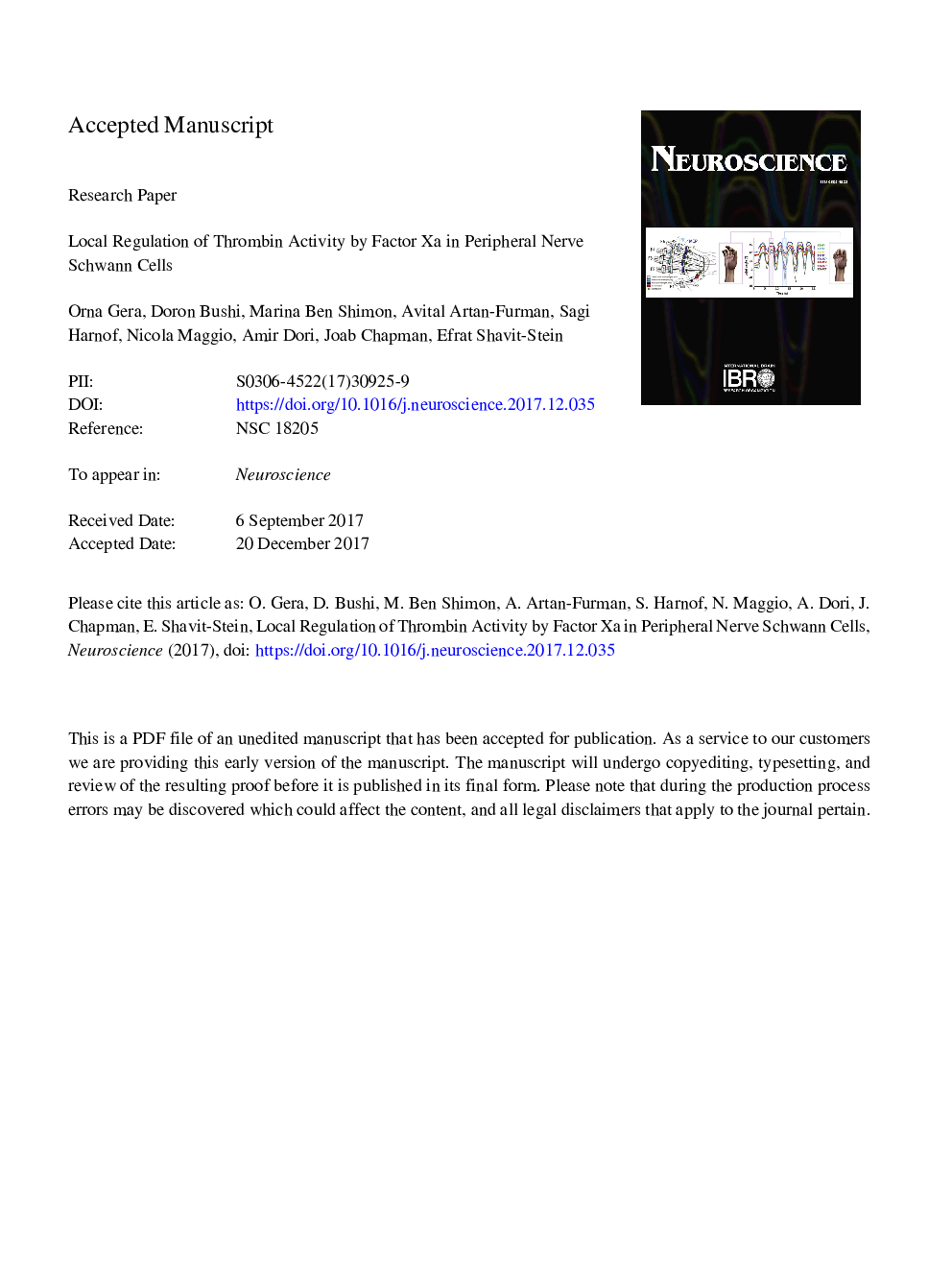| Article ID | Journal | Published Year | Pages | File Type |
|---|---|---|---|---|
| 8841054 | Neuroscience | 2018 | 30 Pages |
Abstract
Thrombin through its receptor plays an important role in the peripheral nervous system (PNS) but the pathways leading to its generation there are not known. In the blood, activated factor X (FXa) which is formed from factor X (FX) by tissue factor (TF) and factor VII (FVII), cleaves prothrombin into thrombin. We here studied these factors in vivo in mouse sciatic nerve and in vitro in a Schwannoma cell line and provide mRNA, immunoblot and immunohistochemistry evidence that FX and FXa are expressed in the normal and injured peripheral nerve and in Schwannoma cells. Furthermore, TF and FVII were localized histologically to the node of Ranvier in the sciatic nerve. Adding exogenous FXa increased the thrombin levels in sciatic nerve (11.6â¯Â±â¯1.6â¯mU/ml compared to 35.2â¯Â±â¯6â¯mU/ml pâ¯=â¯0.02) and in Schwannoma cell line (4.5â¯Â±â¯0.2â¯mU/ml compared to 18.1â¯Â±â¯0.5â¯mU/ml pâ¯<â¯0.001), indicating a large reserve of prothrombin. In the injured nerve, FX mRNA was upregulated 1â¯day after injury compared to normal nerve (103â¯Â±â¯38 versus 1â¯Â±â¯0.3 FOI pâ¯<â¯0.001). FXa protein levels increased 1â¯h after the injury and then decreased significantly at 1 and 2â¯days following injury despite an increase in its precursor, FX. Injecting the selective FXa inhibitor apixaban immediately upon injury decreased thrombin activation and improved motor function after nerve injury. The results localize the extrinsic coagulation pathway and FXa to the PNS, suggesting a critical role for FXa in PNS thrombin formation and the possible therapeutic use of selective FXa inhibitors in nerve injuries.
Related Topics
Life Sciences
Neuroscience
Neuroscience (General)
Authors
Orna Gera, Doron Bushi, Marina Ben Shimon, Avital Artan-Furman, Sagi Harnof, Nicola Maggio, Amir Dori, Joab Chapman, Efrat Shavit-Stein,
